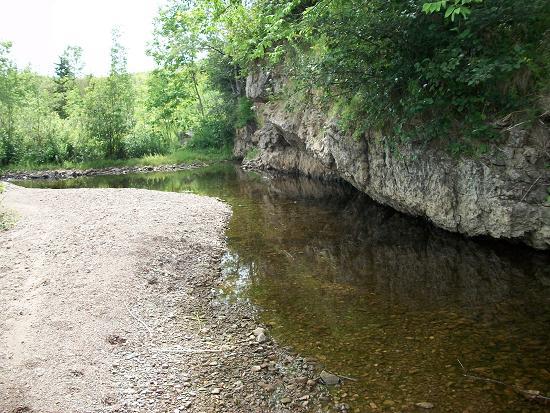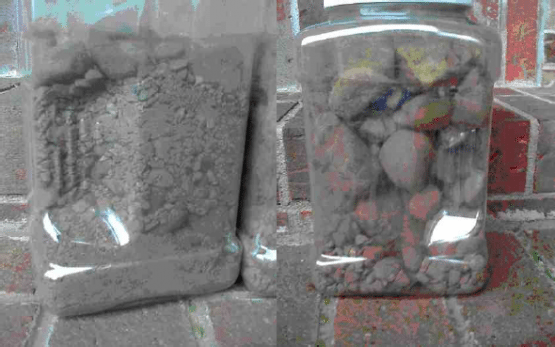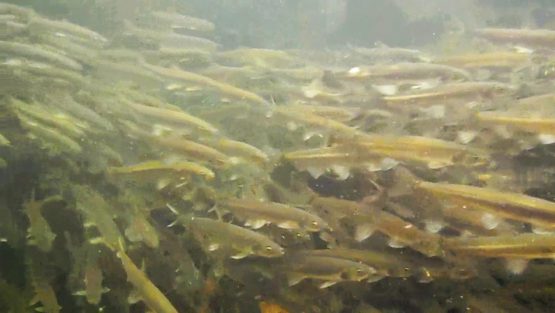Habitat Restoration – Irish Cove Brook
Irish Cove Brook is located on the southeastern side of the Bras d’Or Lake, Cape Breton NS. The lower reaches of the stream are downstream of the #4 Trunk Highway, flowing through an old limestone pit that was reclaimed several years ago; the stream was not restored. The total instream length of the stream between the #4 Highway crossing (454849.7N 604022.1W) and Bras d’Or Lake outlet (454917.8N 604034.8W) is 1040m with a design width of 6.5m, for a total riverine habitat area of approximately 6760sqm
The project
The Sand Wand removed the sand and silt from the substrate. Sand in particular degrades salmonid habitats and is a long term impact that in some heavy cobble or boulder streams will never naturally be removed from Nova Scotia streams. The sand infills the interstitial spaces eliminating the collection of riparian organics that are the major source primary productivity for the stream, greatly reduces insect habitat, impacts or eliminates successful spawning, can eliminate cover habitat for all age classes, including over wintering habitat and can severely damage the pool/ riffle /thalweg development resulting in shallow over widened streams with long runs that restrict migration. The Sand Wand removed the sand and silt down to a depth of 30 cm to 40 cm.
Core samples were taken by working a steel pipe into the substrate at least 25cm and removing the contents by hand. These samples showed the before, with sand and silt, and the after of cleaned gravel. It is clear to see that the intestinal spaces have been cleared and the substrate un-grouted making it 5 to 10 times more mobile and able to be shaped by the stream flows into a more productive pool/ riffle/thalweg stream structure.
In conclusion
The Sand Wand technique removed the sand and silt down to 40cm un-grouting the substrate and allowing the Brook to re-establish a natural pool riffle pattern with excellent quality pools and thalweg. This was achieved without causing new bank erosion or disruption. Every measure of habitat quality was improved.
The Sand Wand has been accepted by DFO Maritimes as a low impact activity and is covered under the NSSA’s NSE blanket watercourse alteration permit for habitat restoration.
VIEW ARTICLE
Irish Cove Brook is located on the southeastern side of the Bras d’Or Lake, Cape Breton NS. The lower reaches of the stream are downstream of the #4 Trunk Highway, flowing through an old limestone pit that was reclaimed several years ago; the stream was not restored. The total instream length of the stream between the #4 Highway crossing (454849.7N 604022.1W) and Bras d’Or Lake outlet (454917.8N 604034.8W) is 1040m with a design width of 6.5m, for a total riverine habitat area of approximately 6760sqm
The project
The Sand Wand removed the sand and silt from the substrate. Sand in particular degrades salmonid habitats and is a long term impact that in some heavy cobble or boulder streams will never naturally be removed from Nova Scotia streams. The sand infills the interstitial spaces eliminating the collection of riparian organics that are the major source primary productivity for the stream, greatly reduces insect habitat, impacts or eliminates successful spawning, can eliminate cover habitat for all age classes, including over wintering habitat and can severely damage the pool/ riffle /thalweg development resulting in shallow over widened streams with long runs that restrict migration. The Sand Wand removed the sand and silt down to a depth of 30 cm to 40 cm.
Core samples were taken by working a steel pipe into the substrate at least 25cm and removing the contents by hand. These samples showed the before, with sand and silt, and the after of cleaned gravel. It is clear to see that the intestinal spaces have been cleared and the substrate un-grouted making it 5 to 10 times more mobile and able to be shaped by the stream flows into a more productive pool/ riffle/thalweg stream structure.
In conclusion
The Sand Wand technique removed the sand and silt down to 40cm un-grouting the substrate and allowing the Brook to re-establish a natural pool riffle pattern with excellent quality pools and thalweg. This was achieved without causing new bank erosion or disruption. Every measure of habitat quality was improved.
The Sand Wand has been accepted by DFO Maritimes as a low impact activity and is covered under the NSSA’s NSE blanket watercourse alteration permit for habitat restoration.
VIEW ARTICLE


